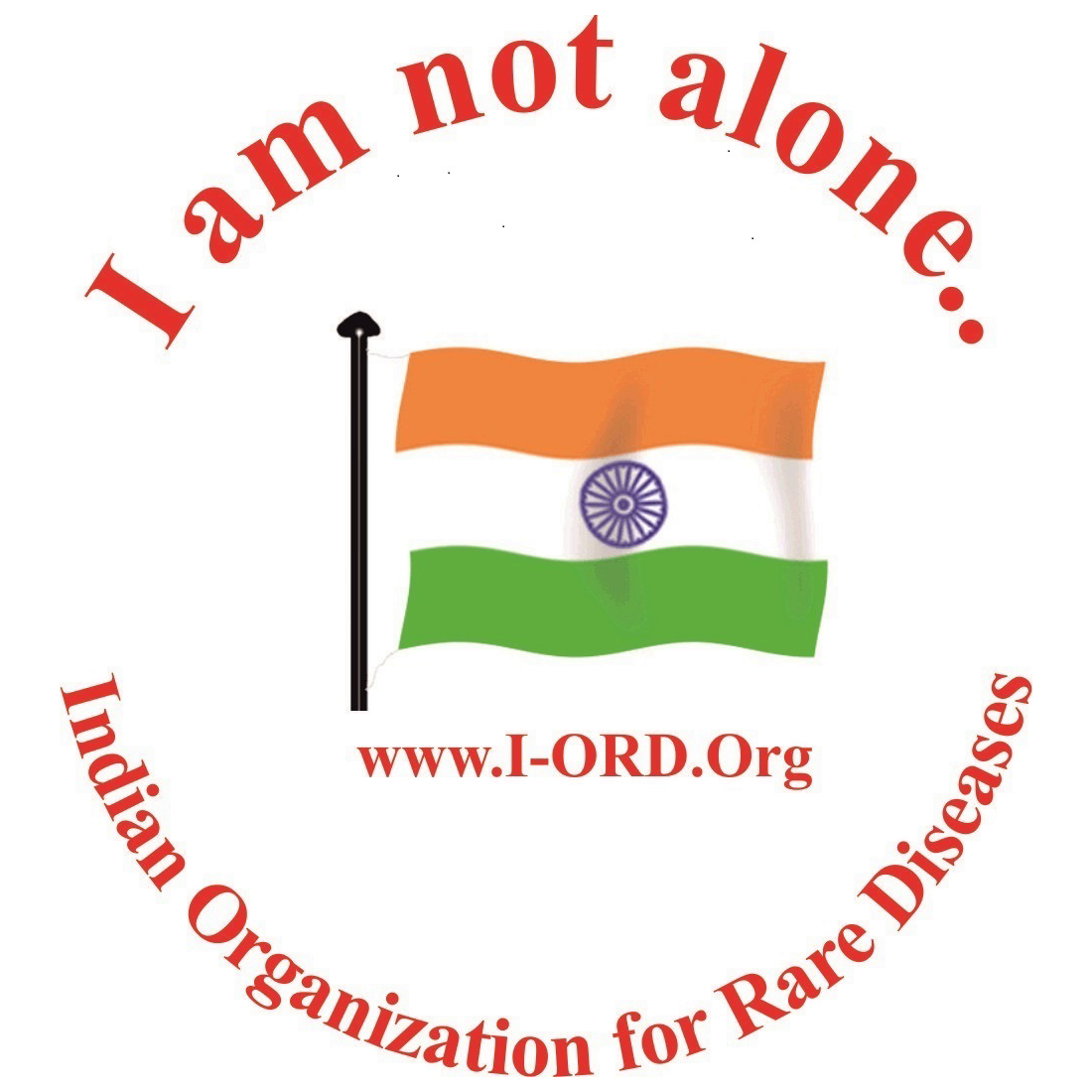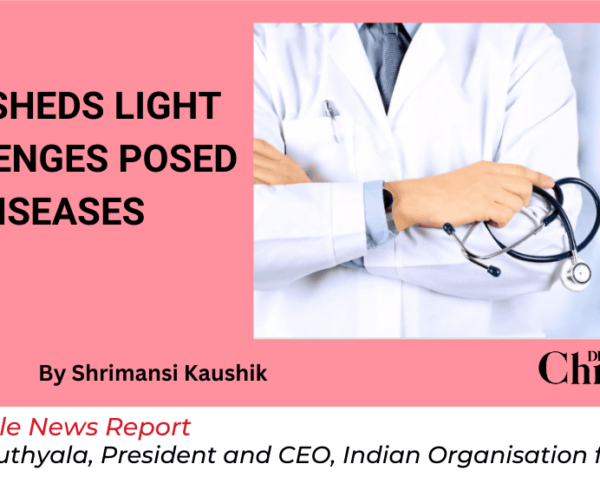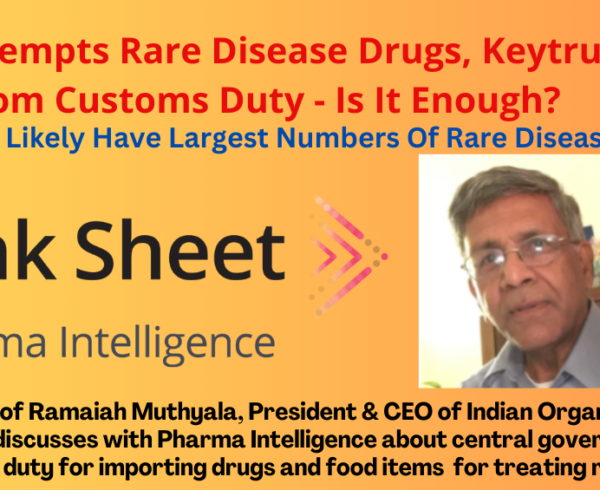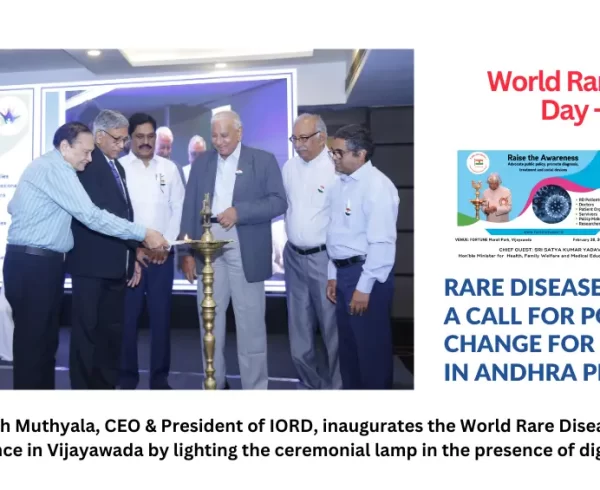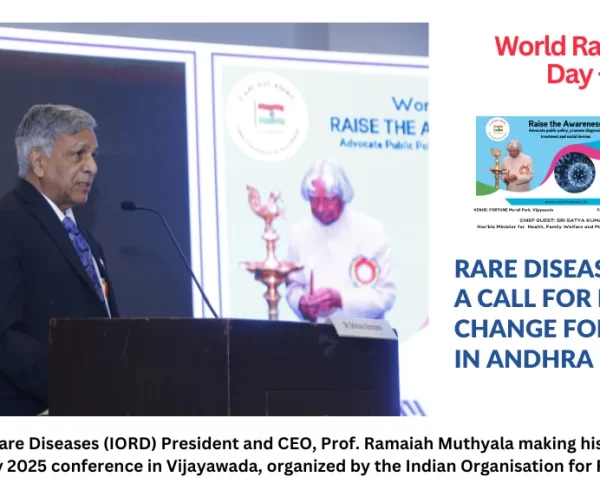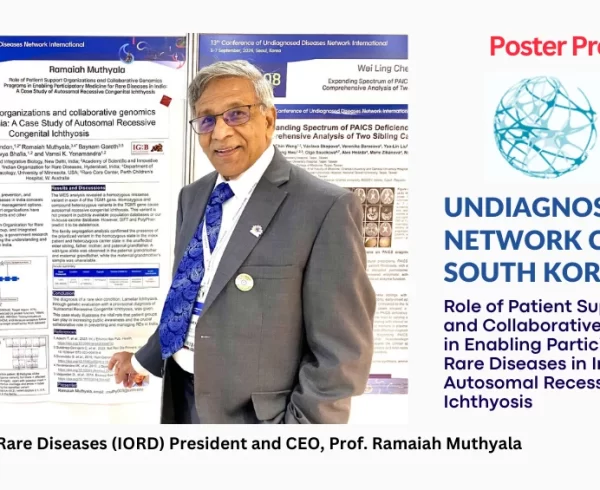The following is an excerpt from an interview of Dr Ramaiah Muthyala, President and CEO, Indian Organisation for Rare Diseases published by BioSpectrum in its April 2023 edition. It an English language Indian biotech magazine which focuses on topics in the field of pharma, agriculture, bioinformatics including news on corporates involved at the R&D or industrial manufacturing or product/service distribution levels in the biotechnology chain.
India has over 450 types of rare diseases in India. Lack of awareness and stigma attached to rare diseases have added to the woes of patients suffering from them. The exorbitant cost of therapies makes many patients opt out altogether. Experts opine that the road ahead to make notable progress in this area of healthcare is long and the right policy measures will determine how this neglected space fares.
The commonly reported rare diseases in India are Haemophilia, Thalassemia, Sickle-cell Anaemia and Primary Immuno Deficiency in children, auto[1]immune diseases, Lysosomal storage disorders such as Pompe disease, Hirschsprung disease, Gaucher’s disease, Cystic Fibrosis, Hemangiomas and certain forms of muscular dystrophies.
According to the World Health Organisation (WHO), these diseases are debilitating, lifelong disorders whose prevalence is less than one per 1,000 persons. They include autoimmune disorders, congenital malformations, inherited cancers, and certain endemic infectious diseases that have very low prevalence.
Hurdles
Lack of awareness and the stigma attached are the two major concerns for rare disease patients and their families. Though the Ministry of Health and Family Welfare formulated a National Policy for Treatment of Rare Diseases (NPTRD) in 2017, the implementation was faced with a lot of challenges. Lack of clarity on the exact number of patients, cost-effectiveness of interventions for rare diseases vis-a-vis other health priorities etc. took a toll on those who suffered from the disease. Poor awareness among the healthcare staff and lack of proper diagnostic facilities also compound the woes of the patients.
The other major concern is the cost of treatment. The exorbitant cost of therapies prevents many patients from going in for the right treatment and many leave halfway. Ramaiah Muthyala, President and CEO, Indian Organisation for Rare Diseases opines, “Rare diseases are genetic disorders; for them, there are no cures, only treatments. Generic orphan drugs, about 350 APIs are manufactured by Indian pharma and all are being exported. They are formulated elsewhere and come back into India at an exorbitant price and import license requirement. As a result, none of them is easily accessible for Indian rare disease patients.
Modern therapies for rare diseases, including gene editing, gene therapy, ASOs, RNAi, mRNA, and ERT are highly promising but unaffordable and inaccessible to the Indian patient community. Although a small percentage of rare disease patients need expensive drugs, others can be managed by alternate therapies such as diet, medical foods, the Indian system of medicines (AYUSH), social support, and medical devices, which improves the quality of life.”
Indian Organisation for Rare Diseases has been promoting collaborations with patient organisations, e.g., Rare Disease International (RDI), European Organization for Rare Diseases (EURORDIS), National Organization for Rare Diseases (NORD), the International Rare Diseases Research Consortium (IRDiRC), the International Collaborations on Rare Diseases and Orphan Drugs (ICORD).
Read the complete article here.
